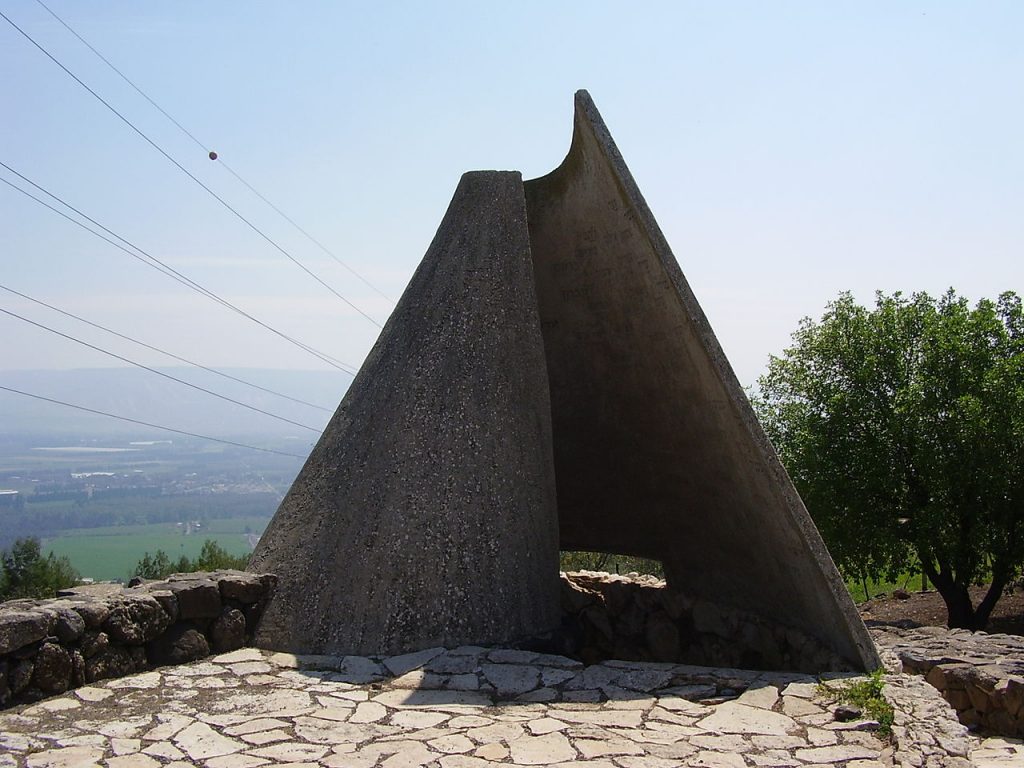From the Carpathians to the mountains of Galilee: The 100th anniversary of the "Galician project" to foster the rebirth of Israel
One hundred years ago, in the spring of 1921, an experiment that became the stuff of Zionist legend ended. Myths were created and scores of books and plays were written about Bitanya-Ilit (in the Lower Galilee), in which the spirit of the pioneers was combined with rumors about psychological bullying and erotic tension.
Bitanya, the first commune in the world founded by the Ha-Shomer ha-Tsa'ir Zionist youth movement, was disbanded after eight months of difficult trials on a mountain near Lake Kineret. Nevertheless, it gave birth to dozens of kibbutzim and Israeli statesmen.
Nearly all the leaders and participants of this experiment were Jews who hailed from various cities and small towns in Galicia. For this reason, I call Bitanya the "Galician project."
It was from this very region of today's Ukraine that in late July 1920, an organized "landing force" arrived in the Land of Israel: a group of 131 people who knew each other from meetings of Ha-Shomer ha-Tsa'ir groups. All of them were eighteen, nineteen, or twenty years old, the majority of them young men.
They had left behind their parents and an affluent lifestyle in order to return from the Diaspora to their land. They abandoned urban comfort in favor of hard work. They were inspired by the formation of the “New Person,” a free Jew in the ancient Fatherland.
Some of the project participants moved to the mountains of the Lower Galilee after completing a "survival school" in scouting marches across the Carpathian Mountains. To use poetic hyperbole, I would say that for those young Jewish idealists, Galicia and the Galilee sounded and looked like their native regions.
The city of Lviv [then Lemberg in the Austro-Hungarian Empire—Ed.] on the eve of the First World War was seething with the ideas of national revivals, and became the "melting pot" of three national youth movements. The three main ethnic groups of this land—Poles, Ukrainians, and Jews—almost simultaneously began creating their organizations for teenagers and youth people:
Lviv, 1911
The creation of the Polish youth movement Zarzewie ("sparks" or "coal");
Lviv, 1912
The creation of the Ukrainian youth movement Plast ("Scout");
Lviv, 1911
Henryk (Tzvi) Shterner founds the first Jewish scouting organization in the world, which is named Ha-Shomer ("The Watchman") in 1913 and somewhat later—Ha-Shomer ha-Tsa'ir ("The Young Watchman").
Among the enthusiasts who arrived in 1920 were many young Lvivites, traumatized by the Jewish pogrom that was organized in Lviv by the Poles in November 1918. To the members of the movement, it was clear that European nationalism was closely linked with antisemitism and that there was no place for Jews there. Indeed, they declared that "Europe is finished!"
The arrival of these young Galician Jews in the Galilee was very timely because in July and August 1920, their native cities had once again become a frontline zone: [Semyon] Budenny's [Red] Cavalry Army was advancing on Lviv.
A young people's revolution
The leaders of this "Galician wave" of 1920 were Dov Opper from Zolochiv, Arie Alweil from Bibrka, Meir Wald from the Peremyshl area, Binyamin Freivogel from Stanyslaviv, Milek Goldshteyn from Pidvolochysk, near Ternopil, David Horowitz from Drohobych, and Abba Schneller from the Lviv region.
The star of this group was Opper, the organizer and head of the Ha-Shomer ha-Tsa'ir branch in Zolochiv, the son of wealthy parents who owned a textile store.
The memorial site of Israel's Ministry of Defense states the following about the twenty-year-old Opper: "He gathered around himself many youths and carried the burden of obligations that demanded responsibility, prudence, quick reactions, and courage. He also attained high status in the city's Jewish community and headed Jewish self-defense in Zolochiv. Upon his arrival in the Land of Israel, Dov became a bulwark [for his friends], thanks to his ability to adapt quickly as well as his practical and focused approach to problem-solving.”
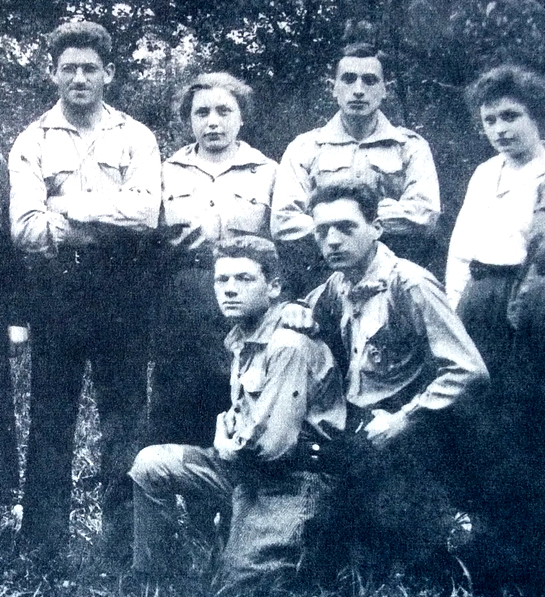
On the evening of 14 August 1920, Dov and his friend were returning from a meeting of labor districts when they were ambushed by Arab bandits. Opper was shot in the heart and died a mere three weeks after his arrival. His friend fled the scene of the attack and soon afterwards left the group, unable to live down the disgrace surrounding his escape.
The following day forty-six people climbed up the mountain and pitched a camp there called Bitanya-Ilit. The future place of legend was simply a large tent with several smaller tents next to it. During the cold winter months, these fragile structures were brought down by the wind. The young people cleared the land of rocks and bushes and dug holes for the planting of trees.
After work, the residents of Bitanya talked long into the night about the question of human existence and sang and danced. They suffered from a lack of food, fevers, and snakes. Living in these primitive conditions, in cold and deprivation, yesterday's children of Galician cities argued about Nietzsche, Freud, and the revival of Israel.
They were attracted to socialism, but without Marxism and the class struggle—in the spirt of the German-Jewish thinker Gustav Landauer, the minister of education of the Bavarian Soviet Republic, who was killed in 1919. Landauer believed that socialism could be implemented by force of the example of individual pioneers who create new forms of collective life within the framework of the old society.
Three commandments
Of paramount significance was the supreme confidence of the young people of Bitanya, who firmly believed that, in rejecting their homes, religion, and "bourgeois relations" between the sexes, they were creating a "new Jew," a free laborer working on his ancient land.
Within a few months, the group diminished to twenty-two young men and four women. Expulsion from the commune often spelled humiliation, including a public dissection of one's personal traits. One participant even shot himself. Found next to his body was a book by Dostoevsky, open at the page with the parable of the "Grand Inquisitor."
The "inquisitor" of Bitanya was Meir Wald, who translated his surname into Hebrew, becoming Ya'ari ("of the forest").
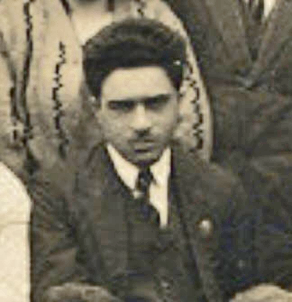
At twenty-three, Meir Ya'ari was not only three years older than everyone in the group; he also had frontline experience as a former officer of the Austro-Hungarian army. After the ceasefire in November 1918, he brought the company of Ukrainian soldiers under his command from Serbia back to Galicia.
Ya'ari became the spiritual guru of Bitanya and gradually gained control over the hearts, minds, and actions of his comrades. His ally in this was nineteen-year-old Milek (Shmuel) Goldshteyn.
Ya'ari issued "three commandments": a society in the spiritual, territorial, and erotic spheres. The first one was achieved by public confessions and discussions of each person's actions, words, character traits, and sexual desires. The second was achieved by the cohabitation of all the friends under one roof and shared work. The third (erotica) remains a mystery to this day, offering historians rumors about the critical lack of females in the young men's collective.
The project leaders Meir Ya'ari and David Horowitz lived in Bitanya with their future wives. A clash between these leaders was inevitable.
In his memoirs, Horowitz called Bitanya a "mystical, isolated sect," in which Ya'ari "himself suffered from making others suffer, but it was clear that he believed in his cult and his religion without God. He was a cross between a Hasidic rabbi from Galicia and a charismatic leader, who plucks the strings of spiritual suggestions."
Personal conflicts, mutual accusations, psychological terror, and sexual energy that had no outlet—all this, according to researchers, led to the collapse of the first commune of the Ha-Shomer ha-Tsa'ir movement in the spring of 1921.
A generation of creators
The Galician natives descended the mountains of Galilee and founded their own kibbutzim. Their later lives took a very interesting turn.
Arie Alweil (1901–1967), who was born in Bibrka, in the Lviv region, became a famous painter and the founder of the heroic style during the period of Israel's formation in the 1930s–1950s. His graphic works turned the ancient kings and prophets into contemporaries and participants of the struggle for the rebirth of the State of Israel.
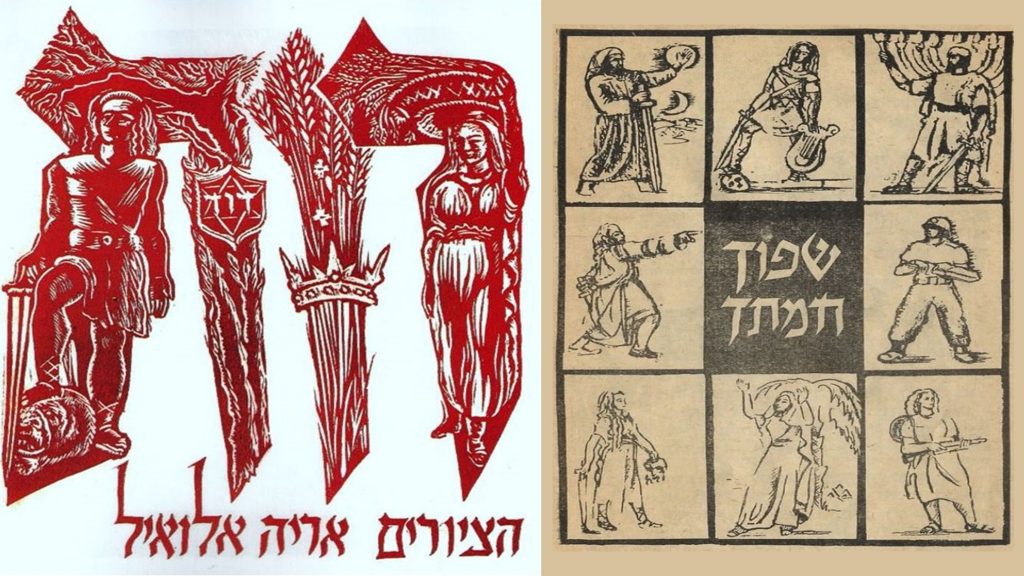
His native Bibrka left a warm, nostalgic mark on his creativity.
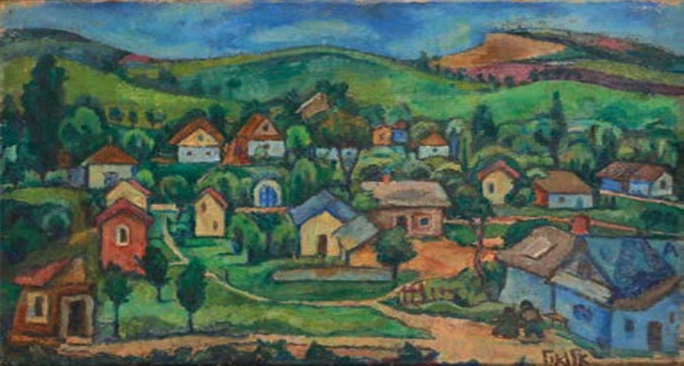
Alweil reproached himself for not having taken his family away from Bibrka, where they were killed, along with the town's three thousand Jews in 1941–1944.
Their stories reflect some of life's paradoxes: These young Zionists were perceived by the Jewish majority as half-mad dreamers and fantasists. Later, it turned out that those who had left to build a Jewish homeland were practically the only ones who survived.
The artist created tombstones on the graves of his Bitanya comrades: Ernst Pollak, who committed suicide, and Dov Opper, who was murdered. Later Alweil would write about his youth: "We knew Goethe and Schiller, but we did not know how to bury our dead."
On 3 July 1941, the elderly Chana, mother of the killed Zionist pioneer Dov Opper, was dragged out of her house by her neighbors during the pogrom in Zolochiv. They beat her the entire way to Zamok, as she recited the Psalms. During the exhumation of a mass grave of Jews near the walls of Zamok, her remains were identified thanks to a wedding ring.
Chana Opper's younger son managed to immigrate to the Land of Israel in 1936. He named his first-born son in honor of his dead brother, and the author of these lines is honored to know the new Dov Opper in Haifa. He became the director of the largest chemical plant in Israel. Dov takes part in commemorative projects in Zolochiv. He has visited this city, on whose main street still stands the huge house that had belonged to the Opper family.
Binyamin Freivogel (Dror; 1900–1988), from Stanyslaviv, became one of the founders of the Beit Alfa kibbutz, the director of the Tnuva dairy concern, the large construction company Solel Boneh, the Mashbir department store chain, and an Israeli trade union leader. He married Judith from the Bitanya camp, a girl from a wealthy Lviv family, whose parents viewed their daughter's absconding with some ne'er-do-well as an act of madness.
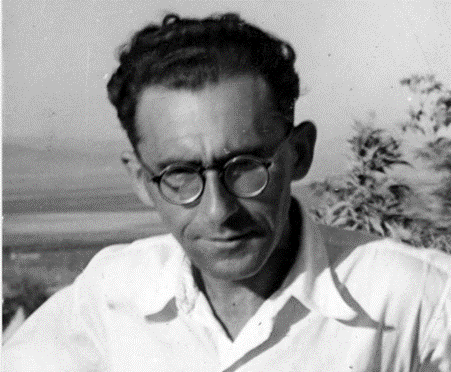
Milek Goldshteyn from Pidvolochysk (Shmuel Golan, 1901–1960) went to Berlin to study psychoanalysis with a pupil of Sigmund Freud's named Dr. Max Eitingon, the older brother of Nahum Eitingon, a Stalinist state security officer and the organizer of Trotsky's murder. After returning to the Promised Land in 1932, Golan and Eitingon were among the founders of the Israeli school of psychoanalysis. Golan is viewed as the main developer of the educational system in kibbutzim. It was he who introduced the system of children and teenagers sleeping and showering together in kibbutzim in order to tamp down young people's interest in sex.
Abba Schneller, from Turka, did not live at Bitanya, but was a member of of the "Galician landing force" in July 1920. He changed his last name to Hushi and became one of the leaders of the ruling Workers' Party of the Land of Israel (MAPAI) under [David] Ben-Gurion. Hushi went down in history as the legendary mayor of Haifa from 1951 to 1969.
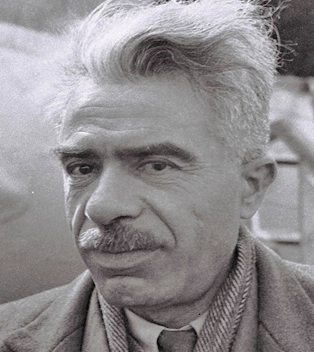
Meir Ya'ari (1897–1987), the guru and "psychological dictator" of Bitanya, became the head of the Ha-Shomer ha-Tsa'ir youth movement and the entire kibbutz system. For decades he headed the ultra-left party MAPAM, the bulwark of Marxism and Stalinism in Israeli politics. Ya'ari was a Member of the seventh Knesset. His son became a general in the Israeli Defense Force (IDF), and his grandson headed the Naval Special Forces and the Israeli Navy.
Ya'ari and his party called the USSR the "Jews' second fatherland." Even when Ya'ari’s fellow MAPAM member Mordechai Oren (Markus Orenstein from Pidhaitsi, in the Lviv region) was convicted as an "imperialist spy" during [Rudolf] Slansky's antisemitic trial in 1952 in Prague, Ya'ari and his party did not stop glorifying Stalin. Historians say that MAPAM was infiltrated by Soviet agents of influence who leaked military and political information about Israel.
David Horowitz (1899–1979), who was born in Drohobych and graduated from a gymnasium in Lviv, was fascinated by economics. In the 1930s and 1940s, he was the economic adviser of the Jewish Agency. In November 1947, he was a member of the Zionist delegation that took part in the work of the United Nations and was responsible for questions relating to finance and economics on the eve of the historic proclamation of the creation of Israel.
From the moment that independence was proclaimed in May 1948, Horowitz became the newly-minted state's general-director of the Ministry of Finance. On his initiative, the Bank of Israel was created in 1954. Horowitz became its director and headed the central state bank for a record seventeen years.
In fact, Israel's entire financial and monetary system was managed by two Jews from Ukraine: David Horowitz from Drohobych and the Minister of Finance Levi Eshkol, from the town of Orativ, in the Vinnytsia region (and future prime minister of Israel, 1963–1969).
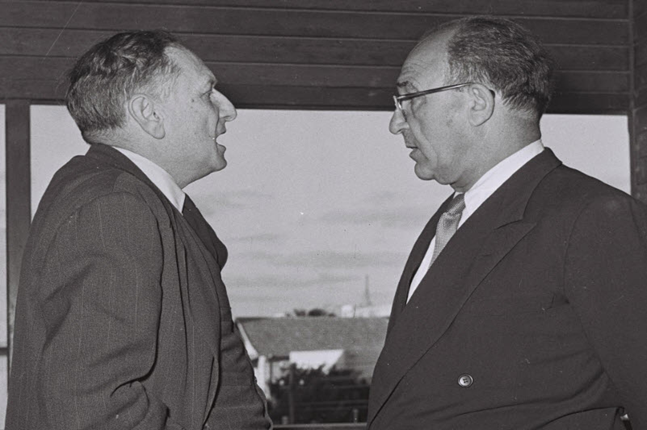
For nearly two decades, all Israeli banknotes bore Horowitz's signature. Perhaps when he was signing this bill for issue in 1960, Horowitz was gazing at a drawing, seeing the young pioneers from Galicia, and recalling his youth, the turbulent months at Bitanya, and the naive dreams about a wonderful and just, new society in the biblical lands.
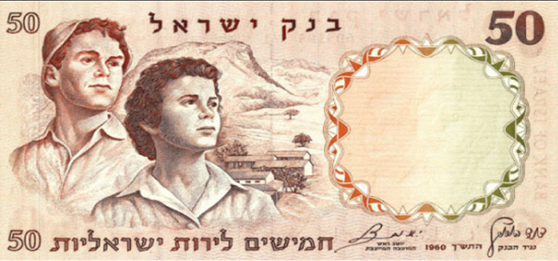
Text: Shimon Briman (Israel)
Photos: Archive of the kibbutz movement; website of the Bank of Israel
Translated from the Ukrainian by Marta D. Olynyk.
Edited by Peter Bejger.







